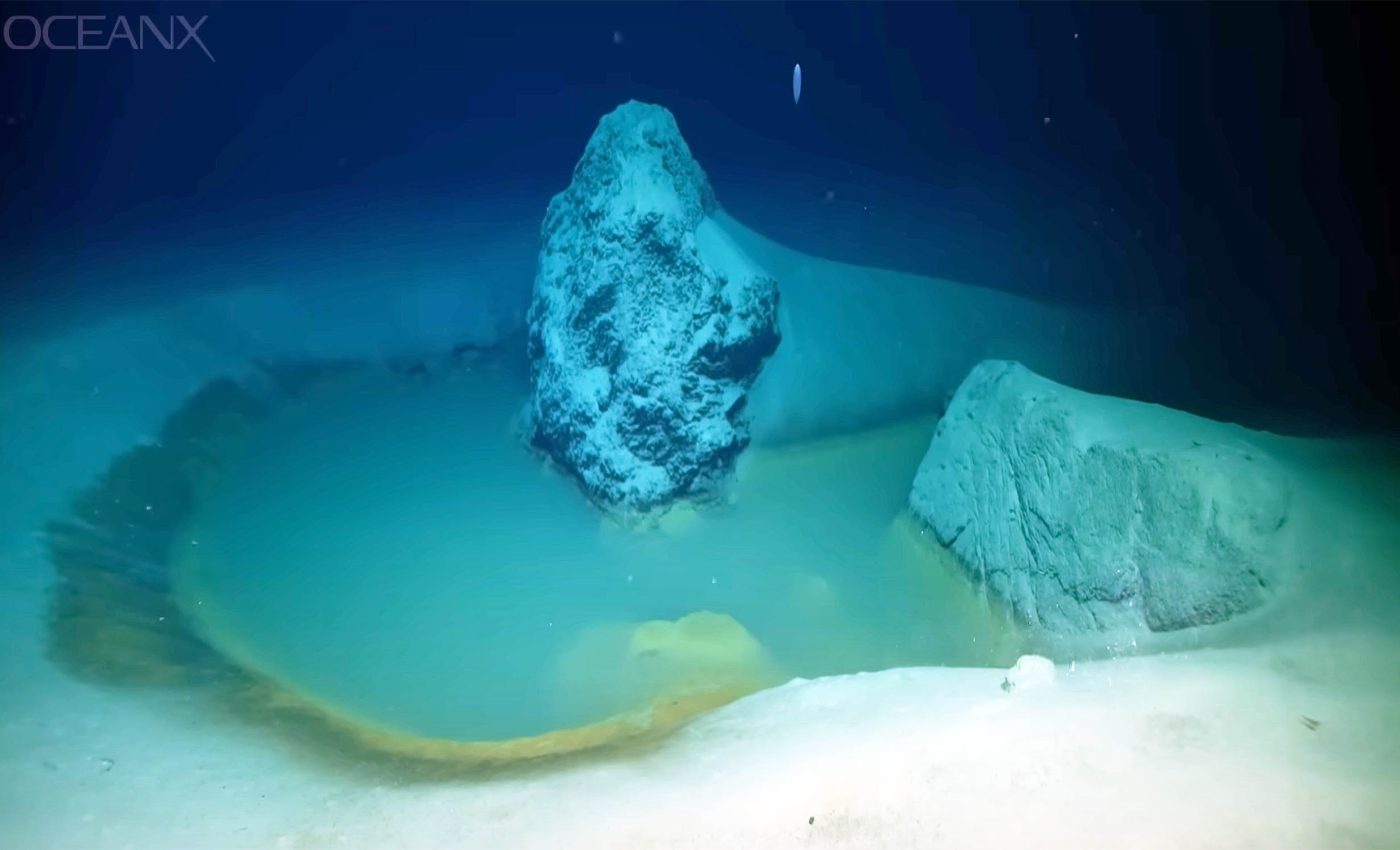
'Extreme life' that shouldn’t exist discovered at the very bottom of the Red Sea
Deep beneath the clear, blue surface of the Gulf of Aqaba, the seafloor holds pockets of water so salty they behave more like dense syrup than seawater. These hidden lakes are called brine pools.
These anomalies resist mixing with the surrounding ocean, lock out oxygen, and create chemical stews that would knock out most marine life.
An OceanX research mission, using a remotely operated underwater vehicle on the research vessel OceanXplorer, stumbled onto a set of these pools barely an hour’s sail from the Saudi coast.
The find reshapes ideas about where brine pools can form and what they can teach us. Until now, most known pools lay far offshore in the central Red Sea, Mediterranean, or Gulf of Mexico.
Discovering a group barely 1.2 miles from land, more than 5,800 feet below the waves, opens a front‑row seat on both ancient disasters and present‑day survival tricks.
Hidden pools of brine and zero oxygen
Brine pools form when salt deposits buried beneath the seabed dissolve and seep upward, collecting in natural basins. Because the brine is heavier than normal seawater, it sits in place like oil in a pan, creating underwater shorelines and currents of its own.
The steep chemical gradient – high salinity, zero oxygen, exotic metals – supports microbes that tolerate conditions much harsher than those in ordinary seas.
Sam Purkis and colleagues at the University of Miami’s Rosenstiel School of Marine and Atmospheric Science first spotted the main pool, roughly the size of a soccer field, on the eastern wall of the Aragonese Deep.
Three smaller pools were clustered nearby. Faults in the seabed had stretched the crust, leaving a depression that trapped the leaking brine.
Close‑range discovery
The fact that these pools lie only about 1.2 miles from shore was a surprise because earlier brine pools discovered sat far out on the continental slope.
Their proximity means material flushed off land by flash floods, earthquakes, or tsunamis can tumble straight in. That makes these basins natural catchers’ mitts for regional history.

“We were very lucky,” Purkis enthused. “The discovery came in the last five minutes of the ten‑hour ROV dive that we could dedicate to this project.”
The ROV’s sensors had just enough battery left to hover over the shimmering interface where brine met seawater and collect jars of water and mud for laboratory study.
Historical record written in mud
Inside the big pool, researchers cored more than 10 feet into the sticky gray sediment. Each layer told a story: coarse grains dumped by submarine landslides, charcoal washed in during desert flash floods, even a band left by a tsunami‑driven surge.
Together the layers stretch back at least 1,200 years, offering one of the Gulf of Aqaba’s most detailed geologic archives.
One layer stood out – a jumbled mix that matched debris from a submarine slump dated to about 500 years ago.
That slide likely kicked up a sizable wave along both Egyptian and Saudi coasts, an event local folklore hints at but modern hazard planners rarely include in risk maps.
Extreme life in a brine pool
Despite the chemical gauntlet, the edges of the pools bristle with life.
Shrimp swarm in clouds at the halocline, snagging prey stunned by the salt shock. Eels dart down to snatch cramp‑stricken fish, then retreat to oxygenated water to recover.
Video from the ROV even caught a deep‑sea dogfish patrolling the brine’s shimmering boundary like a sentry on a patrol line.

Microbiologists are eyeing the mud for unfamiliar microbes. Similar brine pools in the Red Sea have yielded molecules that show promise against certain cancers.
Extreme chemistry pushes microbes to invent proteins and enzymes not seen elsewhere – potential treasure for future medicine.
Brine pools and extraterrestrial life
“Until we understand the limits of life on Earth, it will be difficult to determine if alien planets can host any living beings,” Purkis noted.
The newly sampled microbes thrive without oxygen, under crushing pressure, and bathed in salt levels four to eight times higher than the open sea.
Conditions on icy moons such as Europa or Enceladus may echo those extremes, making Aqaba’s pools a handy stand‑in for testing ideas about extraterrestrial habitability.
The team’s report, published in Communications Earth & Environment, adds that the pools’ chemistry resembles fluids locked inside ancient salt layers drilled from the Gulf of Mexico and elsewhere.
By comparing the Gulf of Aqaba samples with drill‑core data, geochemists hope to refine models of how Earth’s oceans evolved from primordial brines to the oxygen‑rich waters that support today’s sprawling food webs.
Why does any of this matter?
Seismic faults slice right beneath coastal resorts and ports in both Egypt and Saudi Arabia. By logging every underwater landslide or flood signature, the brine‑pool cores give planners a long‑term scorecard of past shocks.
That information can sharpen building codes and emergency plans in a region now racing to expand tourism and infrastructure.
The NEOM brine pools also sit in the Red Sea within the footprint of the massive NEOM development zone, a large-scale, futuristic development project in northwestern Saudi Arabia.
Understanding how sediments move in and out of the Aragonese Deep will help engineers place pipelines, cables, and seafloor installations where they won’t be buried – or exposed – by the next big slide.
Future cruises aims to lower experiments into the brine itself, watching how microbes handle sudden changes in temperature and pressure.
Every vial hauled back to the deck may tighten the boundary on where life can exist, both on this planet and on worlds still waiting for a first visit.
The full study was published in the journal Communications Earth and Environment.
—–
Like what you read? Subscribe to our newsletter for engaging articles, exclusive content, and the latest updates.
Check us out on EarthSnap, a free app brought to you by Eric Ralls and Earth.com.
—–













